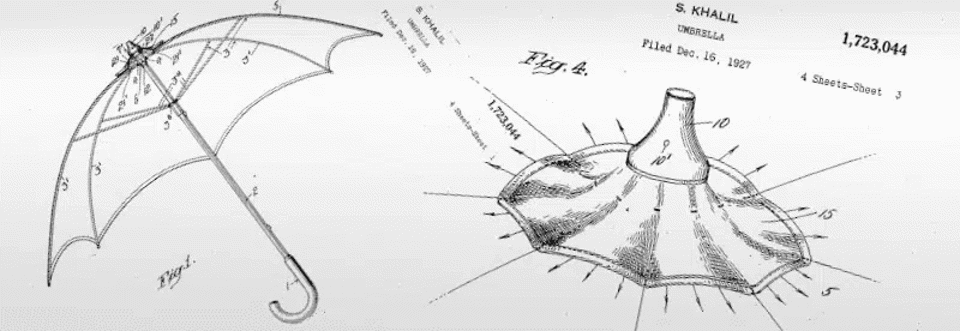In Part 2 of this series, we discussed the need to valuate your IP assets as well as the methods you can use to achieve this end. This final segment focuses on the rubber-meets-the-road question of what kinds of protection should be used for each IP asset and how much should be spent on that protection.
PART 3: PROTECT YOUR IP.
Now that you know what your IP is and how much it’s worth, you must focus on how to protect it. In Part 1 we discussed the various forms of IP as well as how to identify and group IP into categories based on those forms. This last segment – the “how” of this series – marries Part 1 to Part 2 to arrive at this “how” result.
To review, thus far you’ve identified your IP and categorized it under the headings “Patents,” “Trademarks” (which broadly include service marks, as well), “Trade Secrets” and “Copyrights” (Part 1). Next, you “valuated” your IP, “racking-&-stacking” it according to relative value (Part 2). Part 3 in this process – the “how” piece – is simply a matter of “walking” top-to-bottom down your list, protecting as much IP as possible for the lowest cost practicable. This optimization exercise is by no means an exact science. Ultimately, this process is a judgment and decision-making process based on your estimations of the value of your various IP assets relative to the costs of protecting them and in light of your available budget.
An Objective Approach to Prioritizing Protection
One useful method used to “objectivize” this process, which has so many subjective elements, is to assign an estimate to the cost of protecting each IP asset. Dividing the lifetime value of the asset by the estimated cost to protect it over that lifetime will reveal the “normalized” value of the asset.
For example, let’s assume you use the methods detailed in Part 2 to determine that you own an invention having a lifetime valuation of $2 million and that obtaining patent protection for it will cost $20,000 over the life of the patent. The ratio of the two – $2M divided by $20K – is 100. In contrast, a $100K-valuated invention whose protection costs are the same would yield a ratio of only 5. Clearly, from a numbers-only perspective, the first invention should be prioritized over the second for IP protection.
Unfortunately, impediments to these types of analyses arise through errors in predictions and through complexities resulting from multiple variables. For example, an invention could be software-based, requiring expenditures in every category of IP – trademarks, trade secrets, patents and copyrights – to protect the various aspects of this IP asset. Moreover, while most trademarks have relatively low values when they are first registered, many gain enormous value as name-recognition (and consequently brand strength) develop.
But this phenomenon also depends on the brand, itself. For example, if you sell a “bad” product – one that is unreliable or shoddy – or you provide poor services, your trademark or service mark may not only lose value but your company’s association with that mark could damage it: As your commercial reputation – that is, your brand – tanks, so will the value of your company. Hence the admonition that these analyses are not an exact science. Even so, companies should (and must, at some point, if they are to survive) make predictions of the worth of each IP asset as well as the costs associated with protecting it, to determine which, if any, fall into the “must-protect” class of IP assets. Not identifying and protecting the IP within this class can be fatal to a company, especially a startup, since the vast majority of most startups’ worth is in their IP.
Choosing Your Protection Cutoff Point
Assigning “cutoff” values to the ratios discussed above is a necessary – albeit somewhat arbitrary – process, but common-sense methods should guide such line-drawing. One such guideline is to group ratios according to bright-line differences. For example, using the above values and adding in other IP assets, if you observe several ratios clustering around 100 and the majority of the rest grouping near 5, your choice of which assets to protect becomes obvious – especially when considered in light of your available budget.
In practice, this process is easier-said-than-done for a host of reasons, one of the most important of which is discussed above: The ratios depend on accurate estimates. However, the absence of “perfect” knowledge does not excuse the business obligation to have “enough” knowledge. You must still plan, even when the plan is imperfect, and knowing how to plan is often far more important than possessing a particular plan. As World War II leader and U.S. President Dwight D. Eisenhower aptly summed this idea up, “Plans are worthless, but planning is everything.”
Why “Going It Alone” Is Risky
Of course, this three-part series is not intended as an exhaustive treatise on IP protection. Rather, it is an introduction to the deliberate process of identifying, valuating and protecting your IP. Even so, by following the basic tenets and guidelines discussed in this introduction, you will be well ahead of most of your competition, if history is any guide.
You can increase this competitive advantage by obtaining counsel from the specialists in this field, namely, IP and patent attorneys. Martensen IP is a team of patent and IP attorneys who can help you in this regard, but regardless of whom you consult, we strongly recommend that you not try to “go it alone.” IP law (especially patent law) is regarded as the most complex area of law ever devised. And whether you engage our team or that of another IP law firm, you owe it to yourself and your company – including the future of both – not to “min-run” such an effort.







